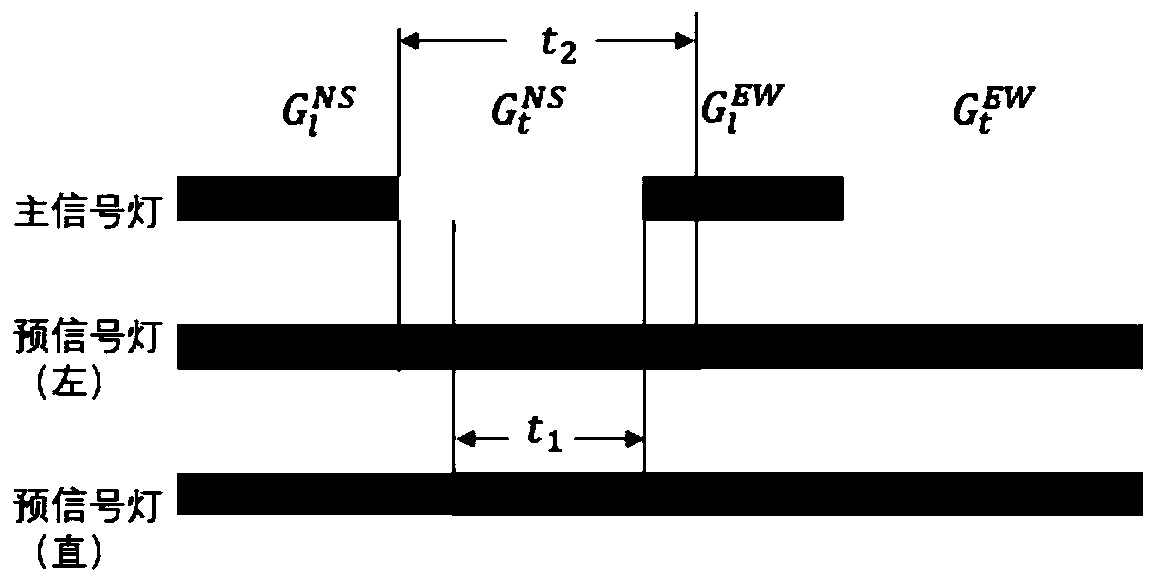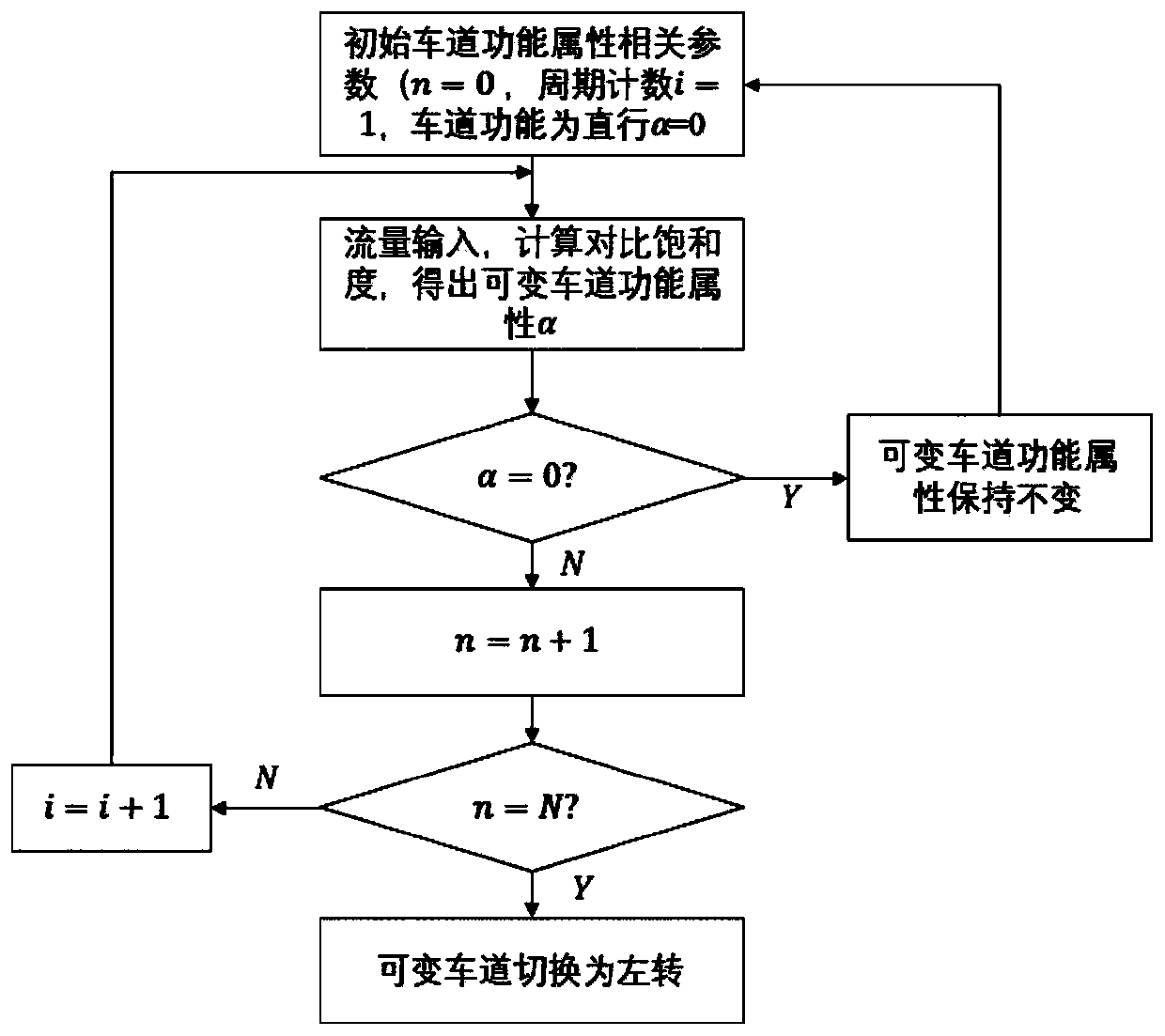Self-adaptive variable lane control method and system for signal control intersection
A signal-controlled intersection and lane control technology, applied in the field of adaptive variable lane control, can solve problems such as numerous constraints and unsuitable intersections, and achieve full utilization
- Summary
- Abstract
- Description
- Claims
- Application Information
AI Technical Summary
Benefits of technology
Problems solved by technology
Method used
Image
Examples
Embodiment 1
[0042] In one or more embodiments, an adaptive variable lane control method based on bayonet detection data is disclosed. First of all, it should be noted that not all intersections are suitable for setting dynamic variable lanes. Aspects such as physical conditions and traffic conditions need to meet the following conditions and assumptions:
[0043] condition:
[0044] (1) The number of lanes at the entrance and exit >= 4;
[0045] (2) Phase conditions, the entrance road with variable lanes must have a special left-turn phase;
[0046] Basic assumptions:
[0047] (1) The impact of pedestrians crossing the street and non-motorized vehicles is not considered;
[0048] (2) This article does not consider the situation where the right turn is controlled by the signal;
[0049] (3) Not applicable to three-dimensional intersections, roundabouts, etc.;
[0050] (4) Special circumstances such as traffic accidents are not considered.
[0051] The overall workflow of the adaptive...
Embodiment 2
[0119] In one or more embodiments, a terminal device is disclosed, including a server, the server includes a memory, a processor, and a computer program stored on the memory and operable on the processor, and the processor executes the The program realizes the self-adaptive variable lane control method of the signal-controlled intersection in the first embodiment. For the sake of brevity, details are not repeated here.
PUM
 Login to View More
Login to View More Abstract
Description
Claims
Application Information
 Login to View More
Login to View More - R&D
- Intellectual Property
- Life Sciences
- Materials
- Tech Scout
- Unparalleled Data Quality
- Higher Quality Content
- 60% Fewer Hallucinations
Browse by: Latest US Patents, China's latest patents, Technical Efficacy Thesaurus, Application Domain, Technology Topic, Popular Technical Reports.
© 2025 PatSnap. All rights reserved.Legal|Privacy policy|Modern Slavery Act Transparency Statement|Sitemap|About US| Contact US: help@patsnap.com



